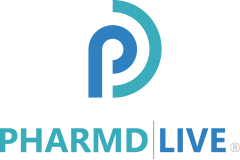The decision to enter the medical profession is personal—and for most of us, it precluded mountains of paperwork and coils of red tape. It had to do with people, healing and working for the greater good. As a pharmacist and CEO, it is easy to envision why business planning so often takes a back seat to patient care.
But as 2018 draws to a close, business plans for 2019 are demanding attention, especially for practices who treat a high volume of Medicare patients. Magnitudinous changes to reimbursement models are imminent, but there is still time to accelerate your MIPS plan and ensure it is aligned with 2019 practice objectives.
Of the myriad of concerns I have heard from stakeholders during past months, reducing physician burden tops the list. Studies show 28% of physician’s time is spent on non-clinical paperwork, translating to lost revenue for practices and increased physician dissatisfaction. It trends as a hashtag on Twitter for good reason—the role of the physician has expanded to include serving as a steward of the healthcare economy—no small task. And, success in the new healthcare model relies on between-visit care, which adds exponential demands on physician time.
If diving into the 2019 QPP requirements on CMS.gov feels daunting, read on. Caveat—consider this a conversation starter rather than an exhaustive list.
Quick Tips to get MIPS ready:
- Check your eligibility status. CMS requirements change from year to year, so this may vary over time. Remember, you can participate as an individual clinician or as part of a group. According to CMS.gov, “to be excluded from MIPS, clinicians or groups would need to meet one of the following three criterion: have ≤ $90K in Part B allowed charges for covered professional services, provide care to ≤ 200 beneficiaries, or provide ≤ 200 covered professional services under the Physician Fee Schedule (PFS).
- Choose your track: MIPS or APMs.
- Select six measures based on your patient population; focus on quality measures, as they will have the greatest impact on your final MIPS score. Improving patient care means quality measures will become increasingly stringent over time. Cost measures are weighted at 30% for the 2019 performance year and will increase over time—a cost-reduction strategy is a crucial element of a successful long-term plan.
- Innovate. In the context of the profound paradigm shift, physicians open to innovating their care models are most likely to thrive. CMS’ approval of several codes for chronic care management services via telehealth is a nod to the critical nature of innovation. Explore partnering with a third party CCM provider, such as PharmD Live, to shoulder between-visit care, adding value for patients and serving as a seamless extension of your practice.
- Earn. In 2018, physicians could earn up to 5 extra points for caring for complex patients. CPT codes 99487 and 99489 allow reimbursement for CCM for complex patients, which can be outsourced to a third party vendor, such as PharmD Live, to optimize clinical and financial outcomes.
As January 1 approaches, explore evidence-based solutions, such as implementing pharmacist-led CCM services to meet and track quality measures. Clinical pharmacists are equipped to manage complex medical pictures, and make high-level clinical decisions to support your care plan.
Ready or not, change is coming.








